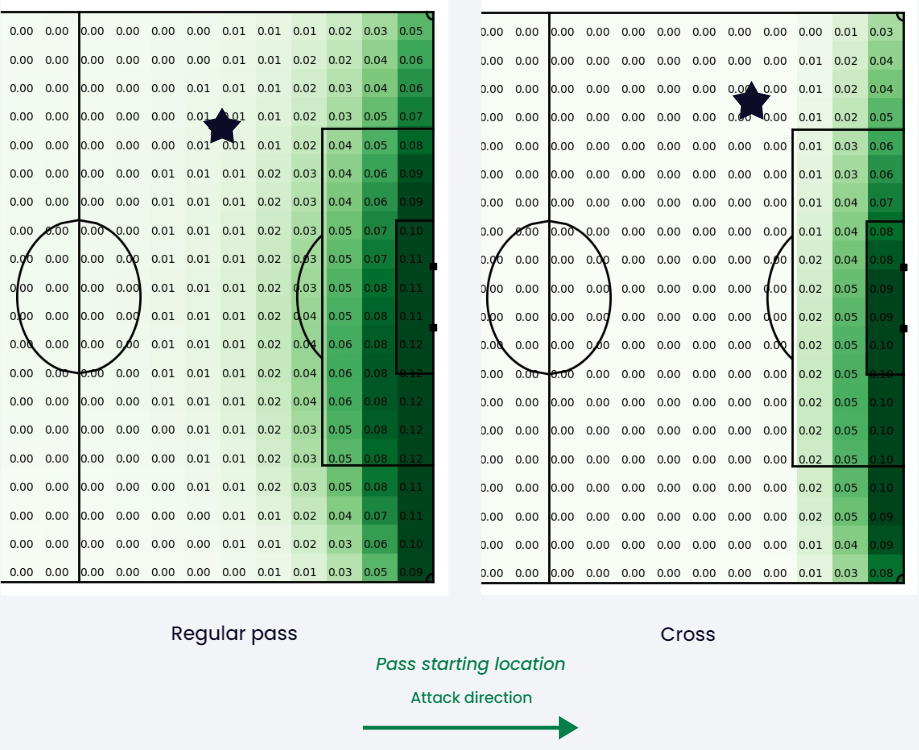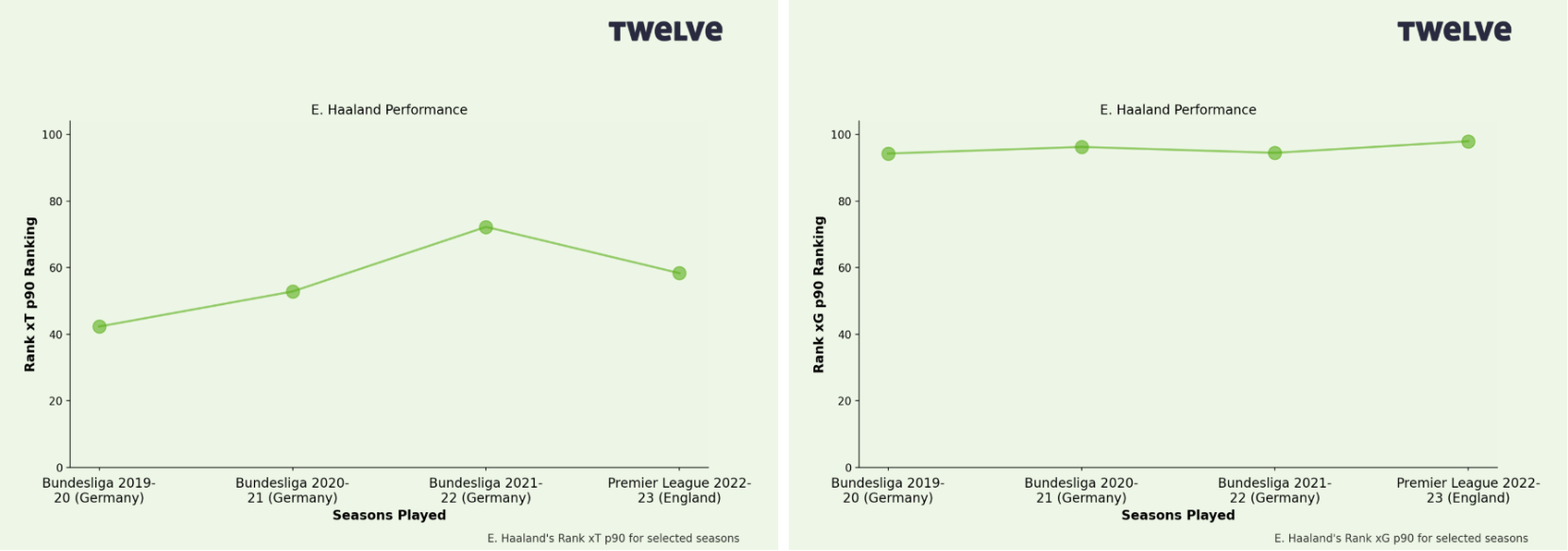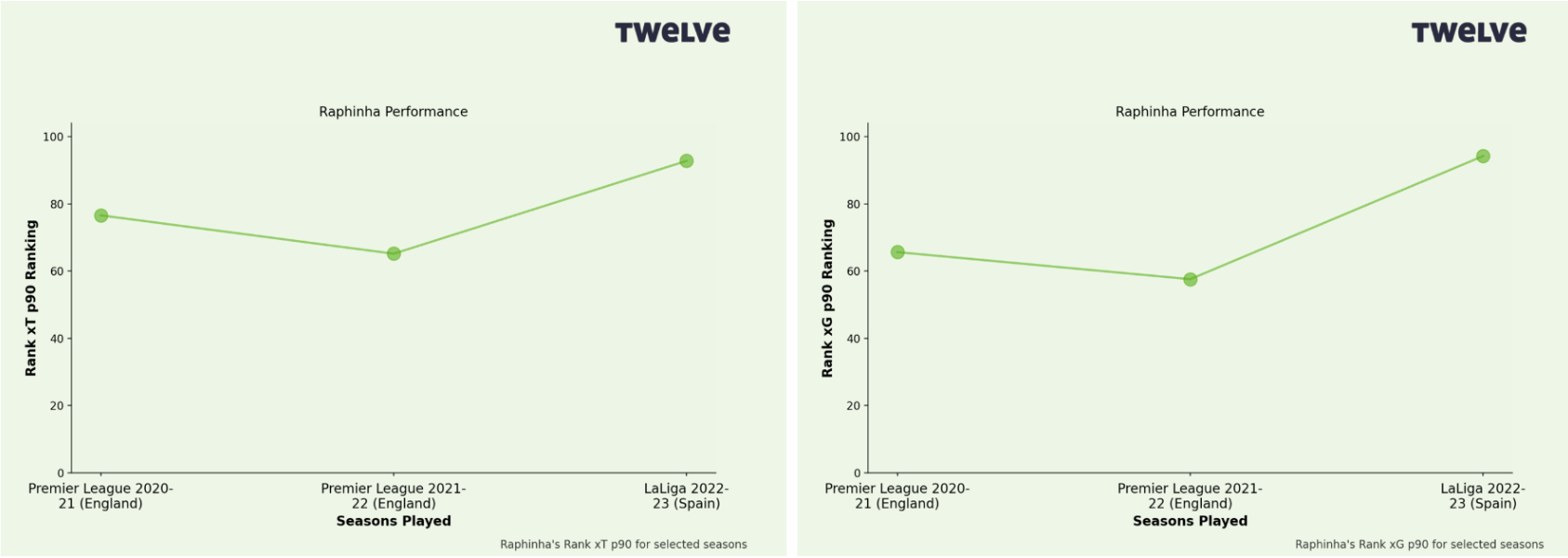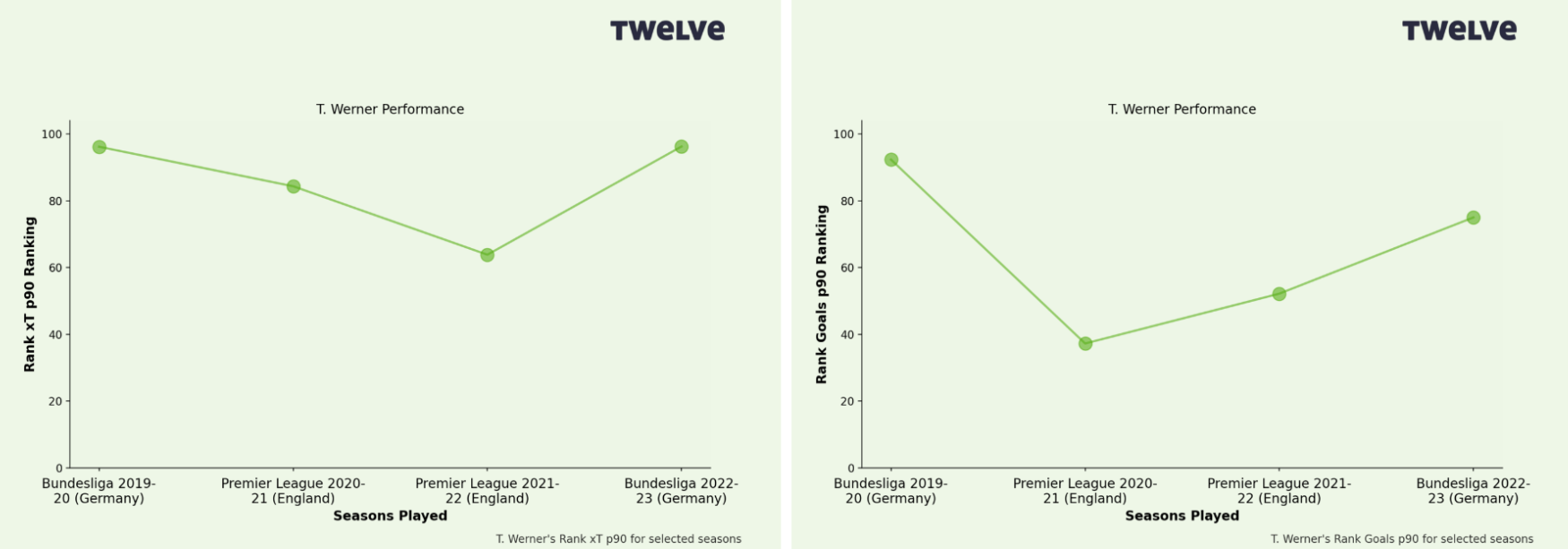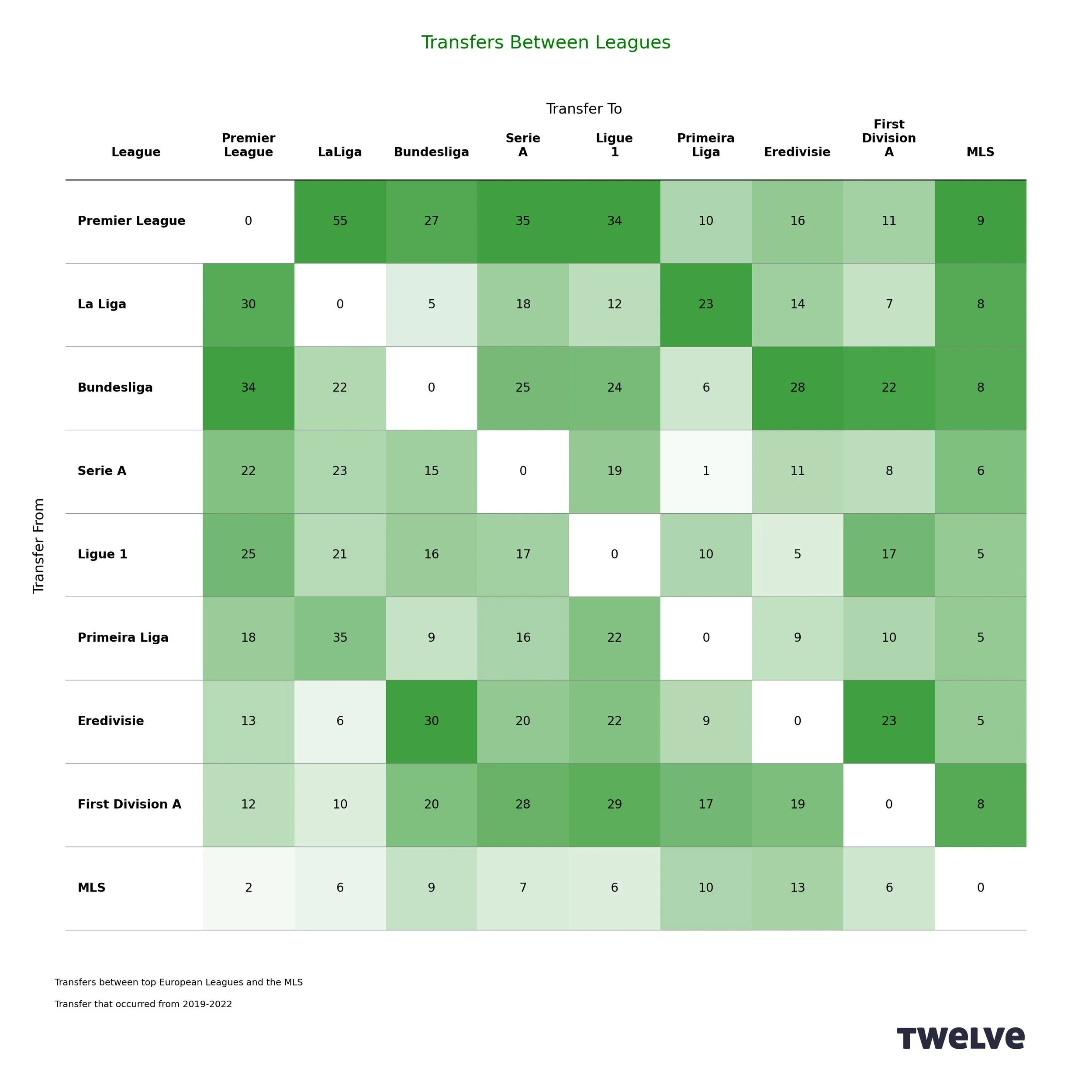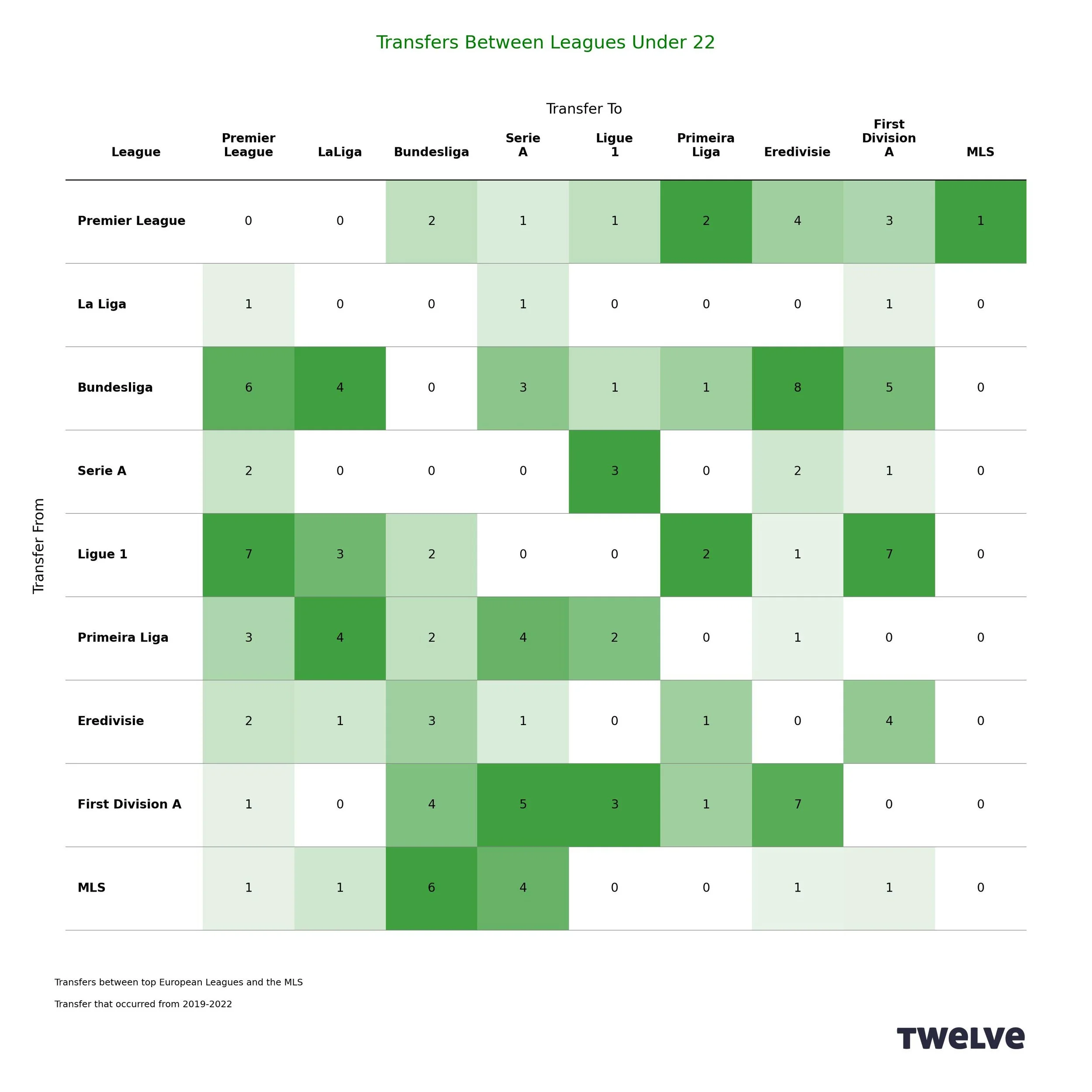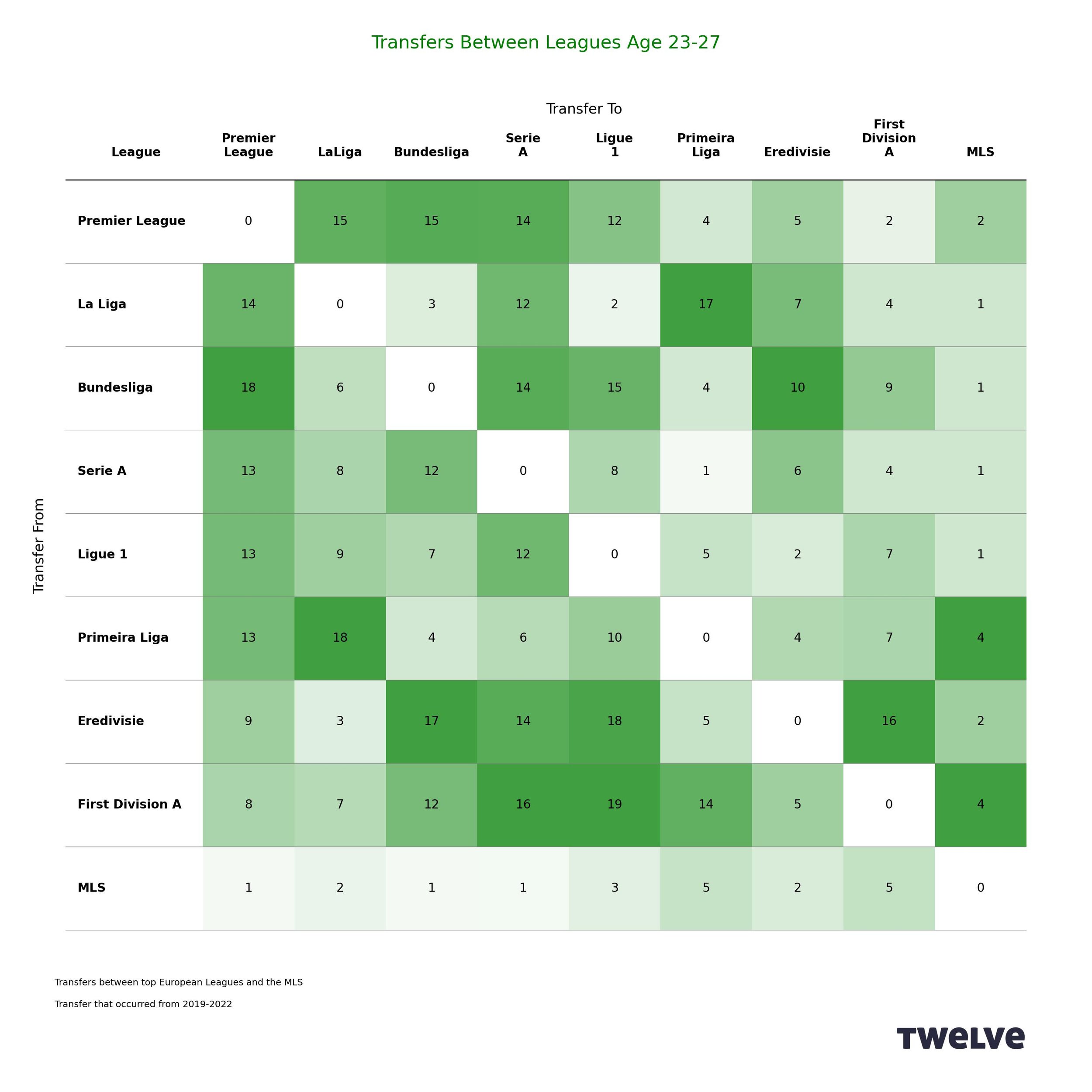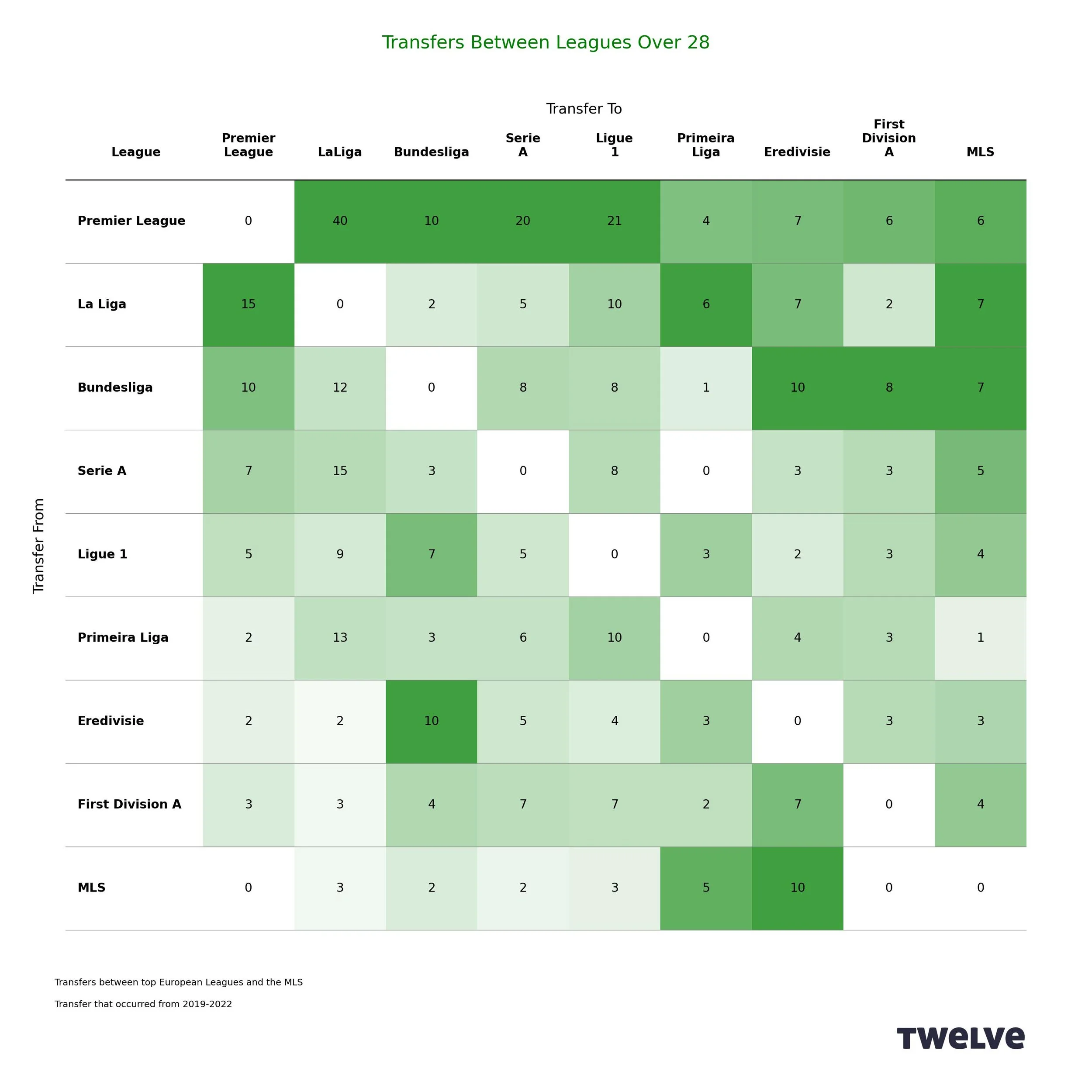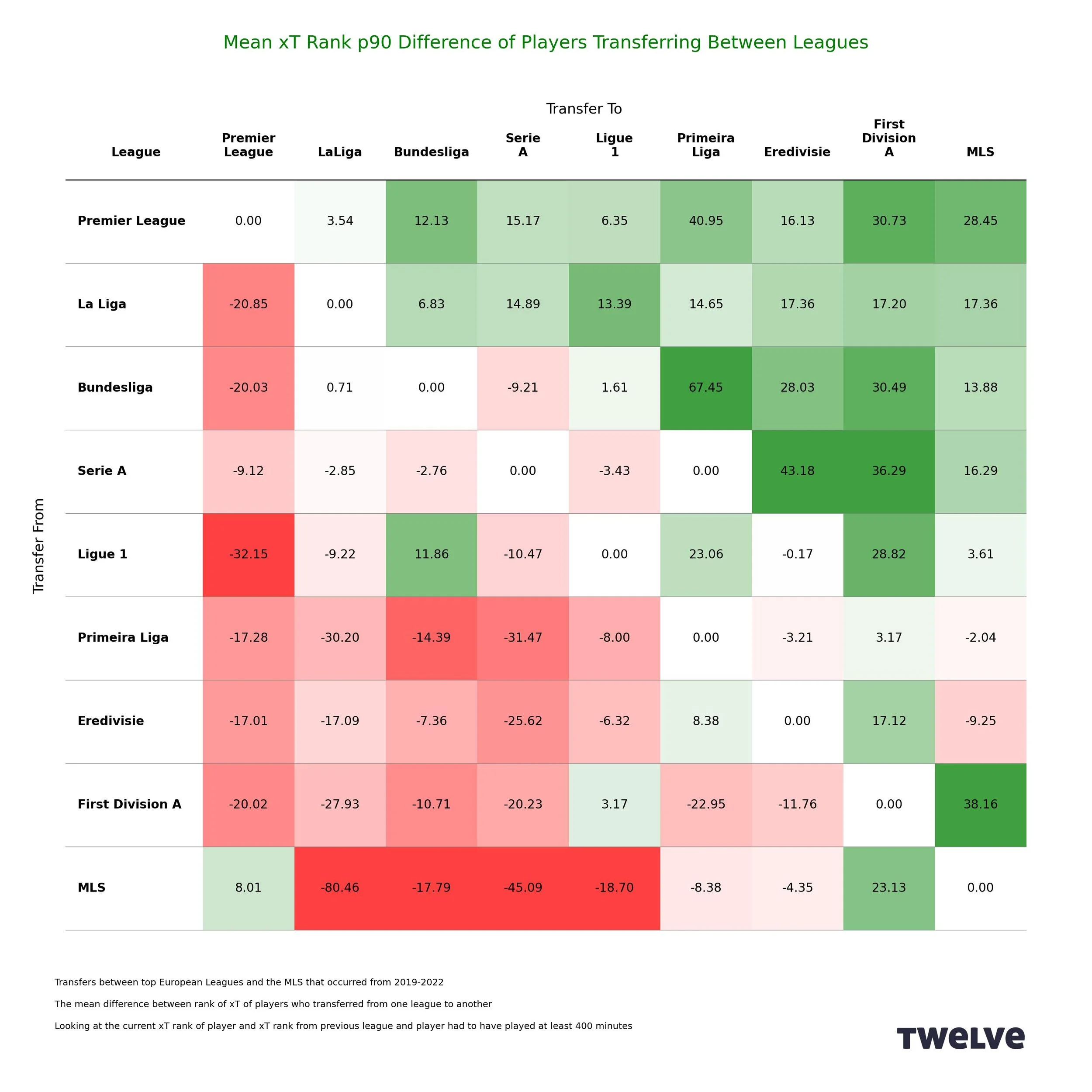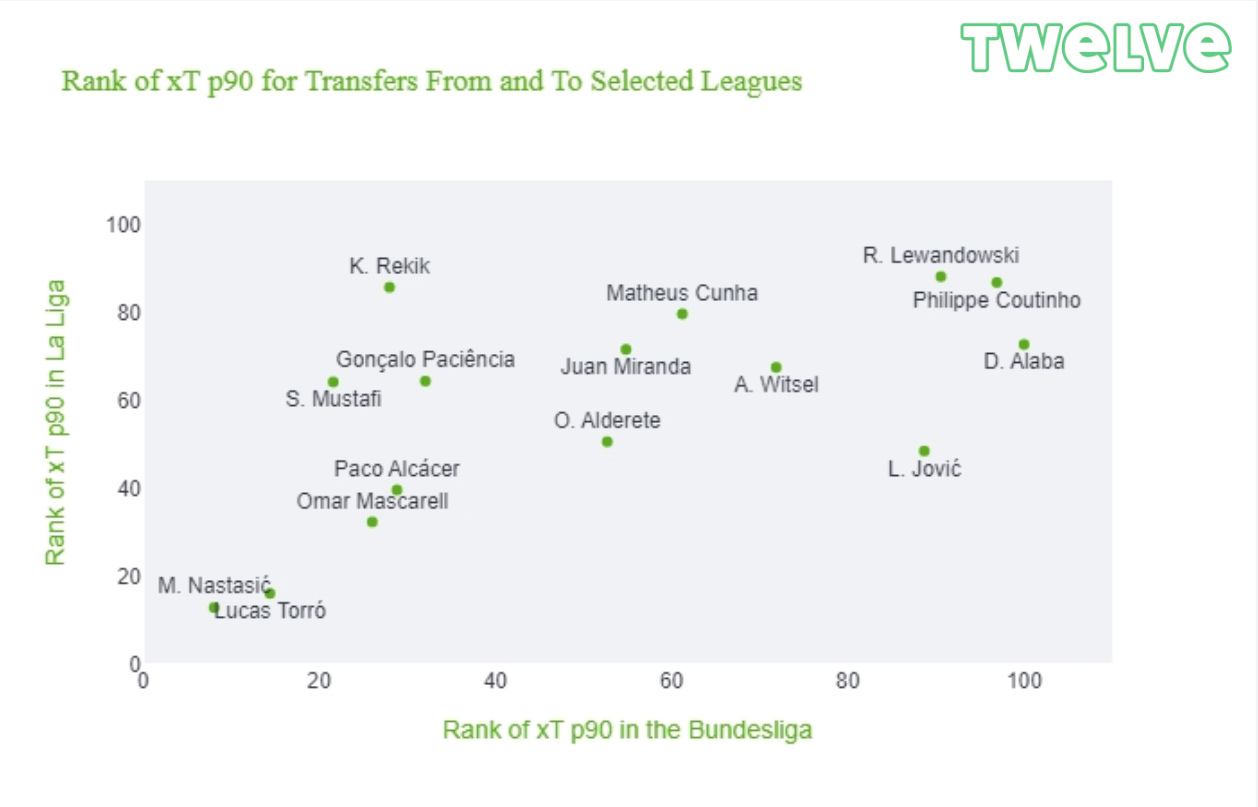But can they do it in the Premier League?
Every season when the transfer window comes around the discussion starts. Insane price tags. Huge Potential. But the question with the big moves is often the same … will they succeed in the new league? Can they live up to their potential? Or will they find themselves on a list of biggest flops of the season?
Let’s answer this question using data. And, more generally, let’s look to see how players leaving one league generally fare in another. As a Premier League team, for example, where is it best to look for a signing which you can depend on to perform well?
Ranking players
Before we start, let's make sure we are all on the same page when it comes to how we evaluate players. Action-based Expected threat (xT) is a model that was created here at Twelve to evaluate actions on the ball on the basis of the probability they lead to a team scoring. In Twelve's model, the value depends on both the start (marked with a star) and end location of a pass. The value on the pitch is the value of the pass given that starts at the star and ends at that point. The model also depends on the type of qualifier. For example, a standard pass (left figure below) has a different xT than a cross (right figure below).
Players will be ranked using a percentile relative to others playing in the same position as them in the league. So when I write rank, I mean percentile ranking in that metric in the league in question for players playing in the same position. This is important since we don’t want to compare a defender with a striker. I typically use two metrics. The first metric will always be xT rank p90 to get a measure of their overall impact. The second metric was carefully chosen depending on the player's position and skillset.
Example transfers
The goal scoring machine, Erling Halaand, after several successful seasons with Dortmund, signed with England giants Manchester City. It's hard to believe it now, but at the time, questions arose as to whether he would be able to do it in the Premier League. Becoming the top scorer in his first season in the EPL, I think we can say he did pretty good! Although his xT dropped a little when he joined City his xG continued to be very high. Halland takes chances more than he creates them.
A silky dribbler and skillful winger, Raphinha found himself playing for Leeds United in the Premier League for two years. During his time with Leeds he was able to put up some impressive numbers playing for a mid table team. However when Raphinha made his move to the Spanish giants Barcelona we saw an instant improvement in his ranking in xT and xG.
Timo Werner is a talented German striker who just couldn't make it work in the premier league. He was a key player for RB Leipzig who got picked up by Chelsea with lots of potential and hope for a great impact. For two years he tried to find his footing but as most would say - he failed. After two years he went back to Leipzig hoping to find his game again. We can clearly see a drop in his performance as he comes into the Premier League. Just after one year back in the Bundesliga we see his numbers improve. Werner is an attacker, we expect him to score goals.
A player who knows how to be dangerous in front of goals for his team. Lukaku had a great spell at Inter from 2019-2021. He then made a move to Chelsea. For 97 million pounds! After the move things became bumpy. Lukaku wasn't happy, fans weren't happy, coach wasn't happy and his performance struggled. A year later he made a return back into Seria A - although he saw less minutes in his second spell with Inter he had put up some good numbers.
Movement between leagues
Every player has a different story, some are success stories and some might be labelled 'flops'. But, at the end of the day, there are so many factors going into how a player will perform. Team performance, playing style, coach, life outside football and many more things that are hard to control or predict. We wanted to see if we could predict how a player would perform depending which league he comes from and where he comes from and where he goes. This will help us understand which leagues are most difficult to play in.
The first thing we explored is the relationship between the top leagues in Europe plus the MLS (thinking a bit about Messi here!). Here are the moves over four seasons 2019-2022.
To understand the matrix above, look at the numbers in the squares. The entry in the top row with ‘55’ shows that 55 players moved from Premier League to La Liga during the time interval. The first entry in the second row shows that 30 players made the move in the opposite direction.
We took this analysis a step further by breaking it down into three age groups.
Under 22s
Young talent is coming out of Ligue 1 in France, the Bundesliga in Germany and First Division A in Belgium
Strong relationship between German and Dutch league
MLS players going to Europe more often arrive in Germany and Italy, with none direct to France or Portugal
Very few players leaving La Liga and Serie A at this age
Ages 23-27
Lots of movement from First Division A and Eredvisie
An increase of overall transfers to the MLS, but few exports to the top league.
Major increase in transfer to and from the Premier League especially from the other top 4 European leagues
Over 28’s
A major shift of transfer from the Premier League to other top European leagues
Eredivisie has a good amount of players heading to the Bundesliga
As players get older there is now movement between the Premier League and La Liga
League comparisons
To make between league comparisons, we explored xTrank of the players making the move. It is important to mention that it is a limited number of players and players have had to play at least 400 minutes in each league, the one they are coming from and the one they came to. First we looked at their rankings in leagues after making a move and made the following observations.
We see some of the best performances from players coming from Premier League and the Bundesliga to the Primeira League (90.51, 91.69)
Players leaving the Premier League tend to have high rankings in the leagues they join
Players joining the EPL from Portugal and Netherlands seem to do the best!
Serie A players joining the MLS excel in the league.
We then went on to look at the difference in ranking after transferring from one league to another. For example if player A has an xT rank of 80 in the Bundesliga and then transfers to the Premier League and his ranking in 60, the difference is -20.
Here are a few important findings:
Joining the Premier League is HARD. On average players do worse when they arrive.
Players coming from the Premier League do well in the other leagues with their average ranking going up
Struggling players in the Bundesliga head over to the Primeira league where we see a drastic change in ranking (67.45)!
Most players coming in to the Premier League struggle in their first year
Ligue 1 players really have a hard time in the EPL (Mbappe be careful)
When players make a move to the First Division A they do well
Jude Bellingham
Let’s use this to make a prediction.
When players leave the Bundesliga they tend to do quite well in La Liga, especially players who thrived in Bundesliga find themselves thriving in La Liga as well. Bellingham's xT rank in the Bundesliga was an impressive high of 97.89. Based on our research we are predicting that Bellingham will fit right in at Real Madrid and dominate the midfield in his first year.
This is just the beginning of exploring the relationship between league to league transfers and players performance. We must look to consider team strength and dig a little deeper into the trends of players performances.
Doing it elsewhere is not easy.


